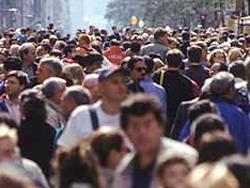America's Downtowns Require Urban Makeover
Minneapolis, MN, Octoer 23, 2024-"For decades, downtown office districts across the U.S. powered local economies, generating commerce, tax revenue and an aggregation of ambition, talent and disposable income,” reports the Wall Street Journal. “Many cities riddled with half-empty office buildings hope to survive the new remote-work era without bulldozing swaths of downtown and starting from scratch.
“Experts say American downtowns instead face the biggest urban makeover in 50 years. Even optimists estimate it will take years and cost billions to complete the large-scale changes to usher central-city office districts into a new role-busy neighborhoods where people live, work, raise families and find entertainment.
“‘The bottom line is we need to reinvent downtowns around the country,’ said Jacob Frey, the 42-year-old mayor of Minneapolis. ‘It’s about having more people in the core of downtown doing something other than just working. It’s about having fun.’
“The city has offered tax breaks to convert offices to apartments and is considering a pedestrian-only zone. Live piano music sounded on a recent workday along Nicollet Mall, a downtown street. People stood at food trucks and picked through racks of used shirts and dresses at a pop-up clothing exchange. Nearby, workers ripped asbestos from a century-old office building slated for residential housing.
“The median drop in foot traffic across 52 major U.S. city centers since 2019 was 26%, according to an analysis of cellphone data in June by the University of Toronto’s School of Cities.
“A sense of desolation discourages many downtown workers from showing up at the office, accelerating the closure of shops and restaurants. Failure to arrest the decline risks the loss of remaining residents and businesses, as well as tax revenue, in a downward spiral that could take U.S. cities decades to escape, said Stijn Van Nieuwerburgh, a real-estate professor at Columbia Business School. “This is a narrow path.”
“The remote-work era could reduce the value of New York City office buildings and nearby retail properties by 42.5%, potentially reducing city tax revenue by 6.2%, Van Nieuwerburgh and two other economists estimated in a recent study. Other cities with significant numbers of office towers face similar losses.
“The central business district in Minneapolis, as in other cities, was mostly built to serve the 9-to-5 office economy. Hotels largely hosted business travelers. Nightlife was spare. Downtown foot traffic has fallen by 44% as of June compared with the same period in 2019, the University of Toronto found, the third-biggest drop among the 52 cities, putting Minneapolis behind only St. Louis and Louisville, Ky.
“Some cities have been pushing to remake their downtown districts for years and know the many obstacles: Few office buildings can be converted to housing. Downtowns don’t easily accommodate family life. Crime fears keep people in the suburbs. No one wants to be downtown if nobody else is.
“Experts say the U.S. is at a turning point similar to when factories disappeared from city centers during the 20th century’s workplace transformation and left steel-and-glass office towers as the primary economic engines.”
